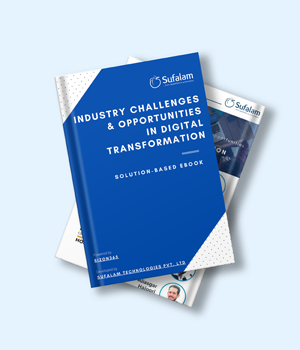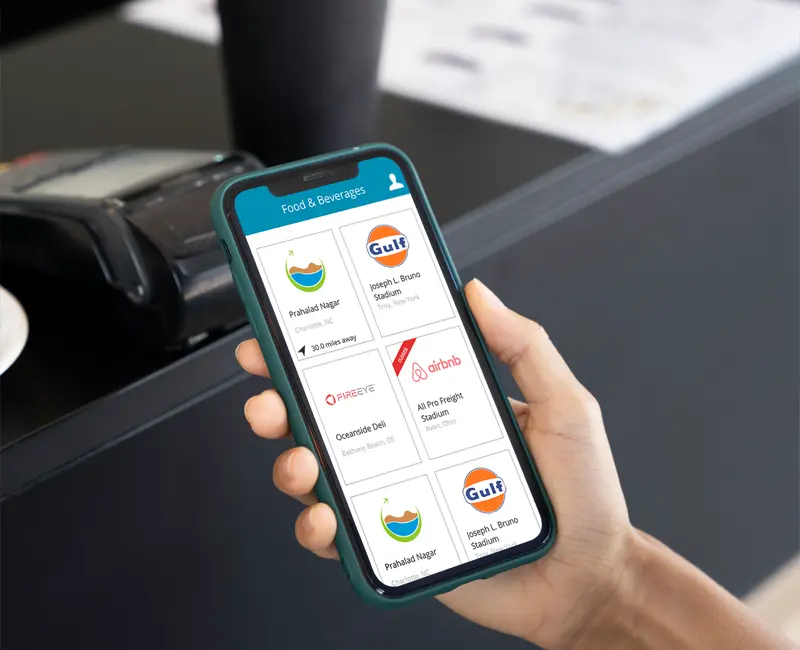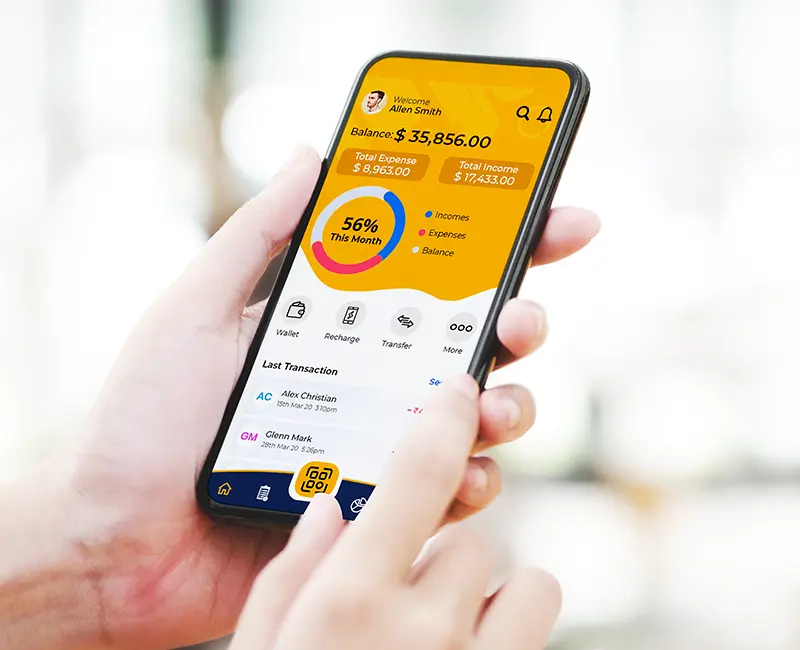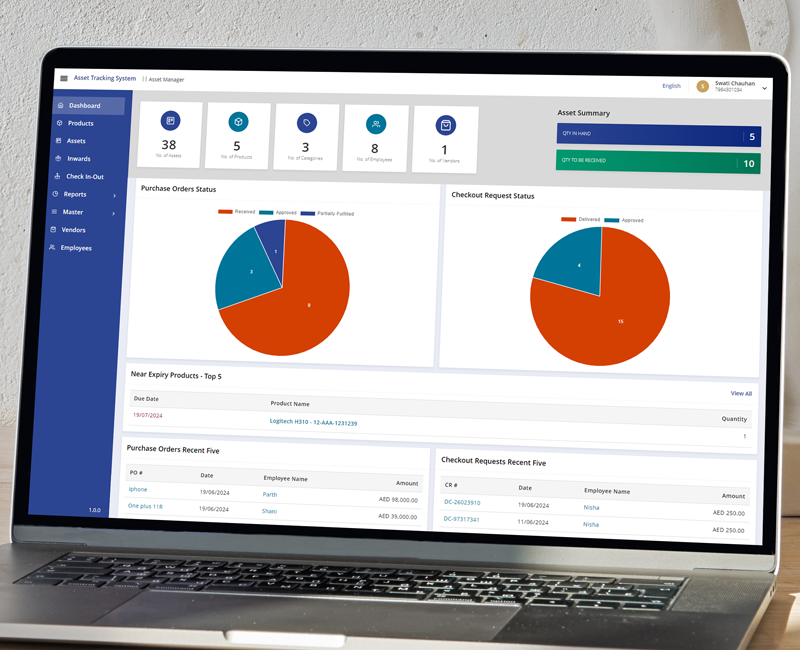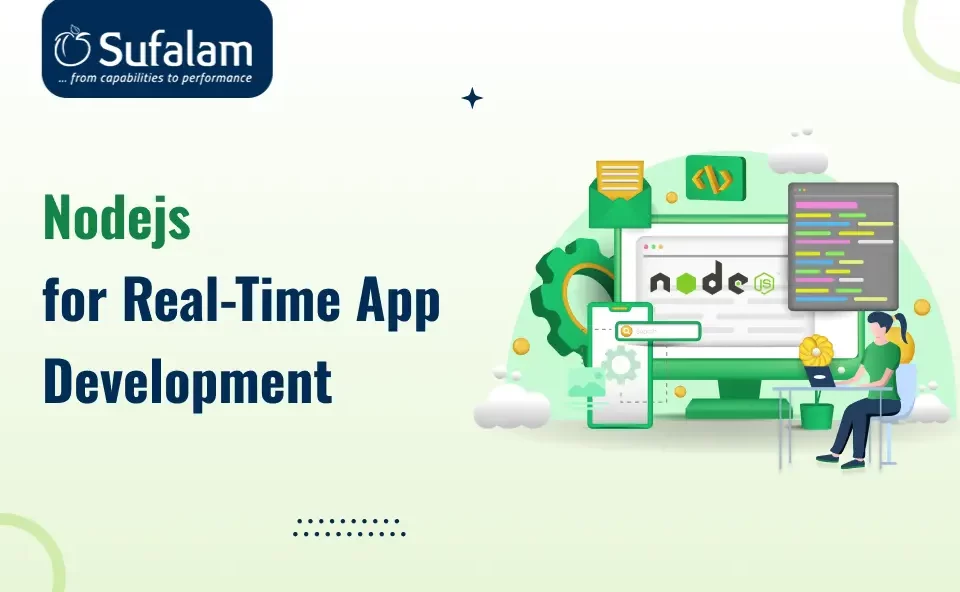
Building real-world applications in Nodejs necessitates dynamic programming, in which the size of the Nodejs application expands unpredictably. When new features and updates are introduced, you must repair issues to keep the code up to date.
This makes it difficult to carry out because more developers must be added to the project. The structure of modules and packages makes it impossible to minimize and simplify the program.
It is crucial to break up the big homogeneous structure into separate, independent programs to make the application work properly. When your apps are built on Nodejs microservices architecture, you can easily overcome such complications.
We have discussed the fundamentals of Nodejs Microservices and how to create one for your Nodejs application.
Let's get going.
What is Microservices Architecture?
Microservices are a type of service-oriented architecture (SOA). It is a component-based approach, where an application is organized using an assortment of separate elements and well-defined protocols like HTTP.
To put it simply, it is an architecture for creating distributed applications utilizing containers, where each integrated function serves as a separate service for your company.
Giants like Netflix, Amazon, Uber, SoundCloud, and many other well-known companies use this architecture in their apps.
But, why should we use Microservices architecture? The benefits!
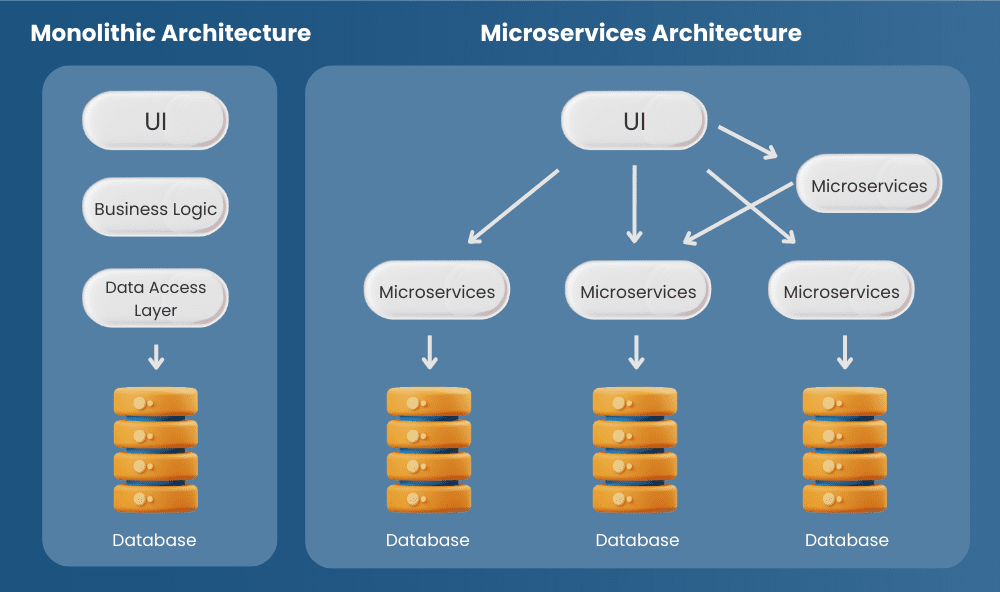
Microservices break down the application into more manageable services and enable improved scalability.
When developing JavaScript applications with microservices, you can emphasize the development of monofunctional modules with well-defined behaviors and interfaces. The process of creating monolithic apps becomes more agile and removes challenges associated with continuous testing.
Microservices offer a number of advantages. Let’s have a look at the comprehensive list of benefits -
- Higher adaptability
- Outstanding scalability
- Continual improvement
- Precisely organized data
- Efficiency of time
- Dependability
Considering the immense benefits of utilizing Nodejs Microservices, let’s find out about the step-by-step process to build Nodejs Microservices.
ALSO READ: What Is gRPC & How To Use gRPC in Nodejs?
Why Build Microservices using Nodejs?
Any programming language, such as Java, C#, or Python, can be used to create a microservice, but there are a number of reasons why Node.js is a superior option.
Node.js is one of the most popular programming languages for creating microservices apps because of its advantages over other languages and extensive adoption when you hire Nodejs developers.
When developing a microservice with Node.js, when you hire Nodejs developers, they will enjoy a continuous workflow as well as Node's rapidity, capacity, and ease of management.
Here are a few more justifications why Microservices using Node.JS are the best option.
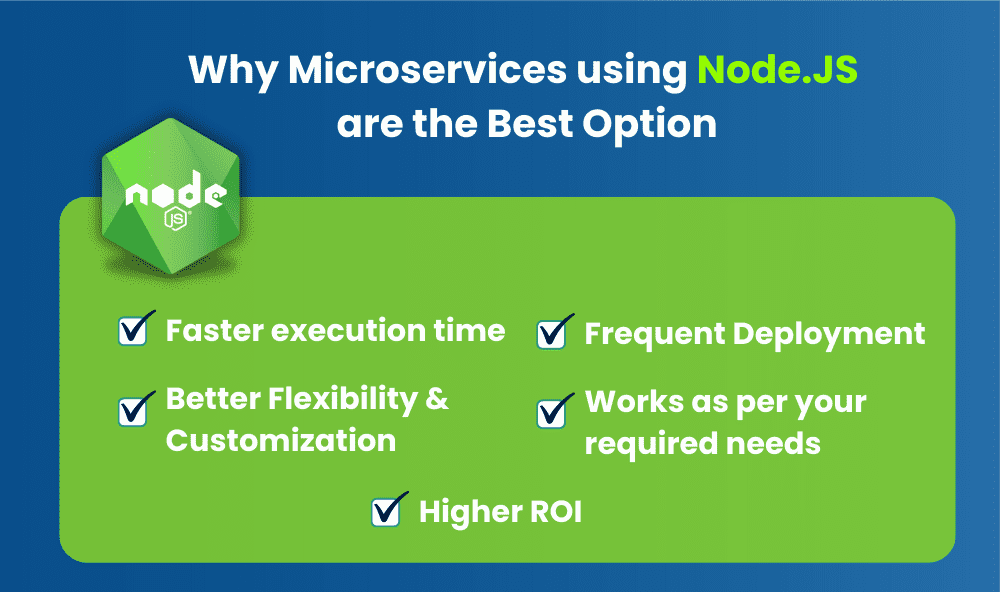
- Faster execution time - As Node.js runs on Google's V8 engine, it converts the function's parameters into native machine code, and Nodejs performance in low-latency CPU and IO-intensive tasks boosts execution time.
- Better Flexibility and customization - With Node.js, we may create microservices that are more flexible and that are simple to grow in accordance with the service or important services.
- Frequent deployment - With NodeJS, we can easily deploy microservices on a daily, weekly, or even more frequent basis thanks to its ability to support frequent deployment.
- Higher ROI - With Nodejs, we can handle one service with a few people and release frequently, resulting in a quicker time to market and a higher return on investment.
- Works as per your required needs - Node js microservices framework are more reliable because they allow you to deploy one service without worrying about disrupting the entire service.
Development of Node JS Microservices - The Step-by-step Guide!
Fundamental knowledge of JavaScript programming is required to create microservices using Nodejs for real-world applications.
The procedures for creating microservices with Node.js demonstrate how working apps in the hyperconnected world can increase Nodejs performance remarkably well when built with a functional combination of various, unique APIs.
The microservice will get better as the development goes along to make it more responsive and economical.
-
Researching the requirements & Initializing
To construct a NodeJS microservice, you must first properly examine your business requirements before proceeding with the initialization.
Install Node.js on your workstation or computer to get started. setting up Node.js. Visit the official Nodejs website (Nodejs.org) to view and download the most recent version!
NPM (Node.js packet manager) must also be a part of the installation package. You must use the NPM in a number of phases, including starting the project, loading all the dependencies, and running services.


In order to begin the project,
- Install the Node.js platform.
- Access the root folder.
- Execute this command: npm init $
- The command starts the walkthrough for creating the package.json file.
The microservice will be constructed around two core packages: Request and Express.
-
Creating database connection
Developing a database connection is more important than ever while building a Nodejs microservices framework. To proceed further, you must pick up an ideal database(MongoDB or PostgreSQL) that properly syncs with your project's requirements.

Then you need to install the necessary database driver or ORM library curated for Node.js. These libraries facilitate communication between your Node.js application and the chosen database.
Next, you need to set up a module or class dedicated to managing the database connection. This module will handle tasks such as establishing the connection, maintaining connection pools for efficient resource utilization, and managing the connections' lifecycle.
And don’t forget to configure the connection parameters. It usually includes specifying the host from the local host or a remote server and a port number, credentials such as username and password, followed by the name of the database you want to connect to.
These configuration details allow your Node.js application to connect securely and effectively to the chosen database system.
-
Specifying Routes
In this phase, we will determine routes for the server and assign each route to an objective in the controller object.
The routes will be specified by 2 endpoints for receiving and sending off requests.

The 'use strict' directive is now used in the most recent versions of JavaScript. The objective of this directive is to create secure coding techniques.
You can utilize the specific functionalities as we can access them easily in other files through the routes module. The routes element can be imported from server.js and utilized to specify the routes for the Express package.
At this point in the process, two routes are included in the application.
- The initial one sends GET queries to /about the endpoint.
- And, another route that has been included in the app sends GET queries to the /distance endpoint. The controller's get_distance method handles these requests.
-
Building Controller
By incorporating controller logic within the microservice, it gains some fascinating capabilities. A controller object decodes user intentions and behavior before communicating the updated or new data to processing objects.
A controller object with 2 characteristics must be established in the controller file specifically for this microservice. The two attributes serve only to handle the requests that come in from the routes module.

his code creates the properties controller item. The process object can import and utilize the useful information of the package.json file with the help of this object.
The get_distance method and the about function are two separate sections of the code. The first feature takes requests and response objects.
The get_distance functionality synchronizes the distance module with the find or callback functions. Both the error objects and the distance objects are accepted. The find function returns the response object in the event of errors.
-
Making the external call
While developing a Nodejs microservices architecture, it is crucial for microservices to interact with external services or APIs. These external services can offer a wide range of functionalities namely payment gateways, authentication services, and other important third-party data sources.
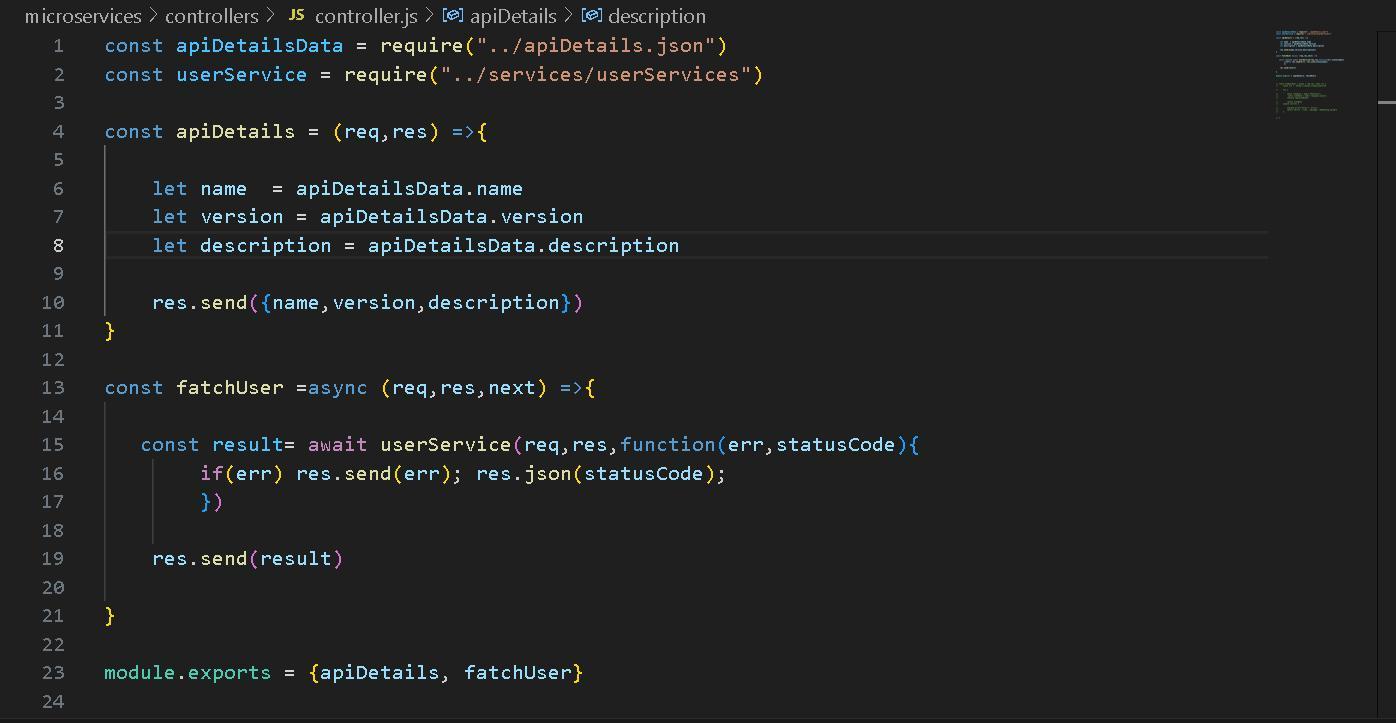
To enable communication with these external solutions, you must install the necessary libraries or modules that facilitate making HTTP requests. Popular choices for this are libraries like Axios, which provide a clean and intuitive API for sending HTTP requests from your Node.js application. Alternatively, you can also use the built-in Node.js http or https modules to make HTTP requests directly.
Once you have the appropriate libraries or modules installed, you can integrate the external calls within the appropriate controller methods of your microservices using Nodejs.
Quick Tip: It's essential to handle errors effectively when making external calls. Proper error handling ensures that your microservices gracefully handle unexpected scenarios, recover from failures, and continue functioning reliably.
-
Execution call
After making the external deal with executing calls as well while building microservices architecture Nodejs. It includes writing the code that orchestrates the execution and coordination of the microservices to get the required functionality.
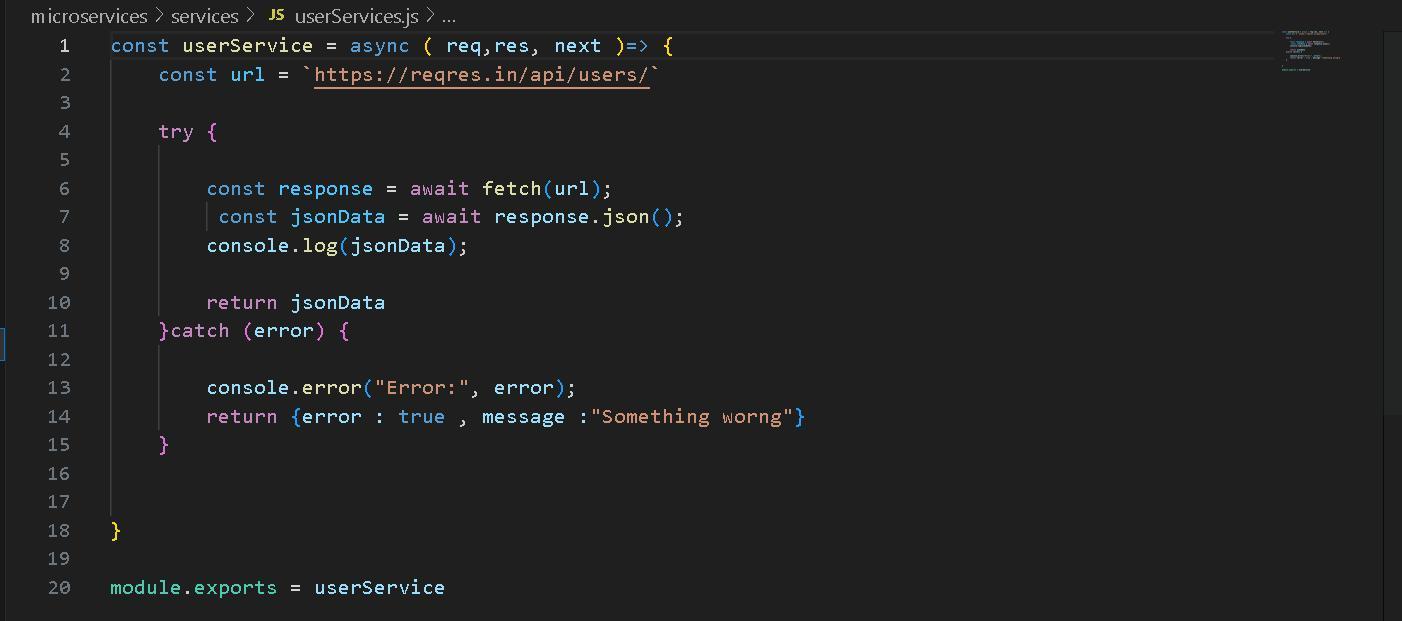
The execution code acts as the connective tissue that links the microservices together, ensuring they work seamlessly as a unified system. You can make it possible by determining the execution flow based on the business requirements and dependencies between microservices using Nodejs.
Throughout the process, the information and context are passed between the microservices, leading to the seamless exchange of data and collaboration.
With efficient and well-structured execution code, you can create a reliable and scalable microservices architecture that fulfills your application needs. To get the best results, you can hire a leading Node.js development company who will understand your needs and offer solutions accordingly.
Bottom Line
Summing up everything, as you might be aware that building a Nodejs microservices framework needs thorough planning, design, and implementation. By following the step-by-step guide outlined in this blog and Nodejs best practices, you can create a robust and scalable system that leverages the benefits of microservices.
Remember that building a microservices architecture nodejs is a continuous process, and it's crucial to continuously monitor, evaluate, and improve your system. As your project evolves, you have to refine your architecture and introduce new microservices, while even optimizing existing ones based on changing needs and user feedback.
At the end, a well-designed and highly scalable Node js microservices architecture offers flexibility, scalability, and maintainability to your application.
If you are looking for a leading Web application development company, that can help you build a scalable Nodejs Microservices Architecture, then you can reach out to Sufalam Technologies and we can help you out!
Frequently Asked Questions
Is Nodejs good for microservice?
Yes, surely! Among all the Javascript frameworks for building microservices, Nodejs is the best choice for developing microservices because of its lightweight and event-driven nature. On top of it, its non-blocking I/O model and rich ecosystem of libraries make it ideal for creating scalable microservices architectures nodejs.
Which architecture is best for node JS?
Node.js is quite popular for developing scalable and event-driven architectures, such as microservices or serverless architectures, due to its non-blocking I/O model and ability to manage concurrent requests seamlessly.

